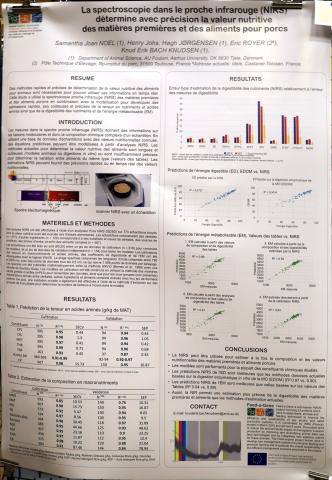Near-infrared spectroscopy (NIRS) accurately predicts the nutritive value of individual components and mixed diets for pigs
Accurate feed-quality information is of outmost importance, not only because feed accounts for at least two-thirds of the cost of livestock production, but also because accurate feed-quality information is critical for optimizing performance and minimizing the climate footprint of livestock production. Current methods to determine the nutritive value of pig feedstuffs are time consuming and expensive (animal models or in vitro digestions) or not accurate enough to determine variation among feedstuffs of the same type (table values). Here, we used near-infrared spectroscopy (NIRS) of 619 pig feedstuffs in combination with modeling to develop rapid, inexpensive and accurate estimates of the digestibility of macronutrients (energy (DE), organic matter (OM), protein, fat, crude fiber (CF), nitrogen free extract (NFE), dietary fiber (DF) and hemicellulose) as well as metabolizable energy. Prediction models were developed for cereals, alternative ingredients (e.g. cereal substitutes, protein concentrates, cereal by-products and grass meal) and mixed diets or all pig feedstuffs together as a whole. Models were tested using an independent set of samples (n=154). Overall models predicted the digestibility of macronutrients well (R2 = 0.70-0.87 for DM, OM, protein, fat, and energy). Moderately accurate predictions (R2 = 0.50-0.52) were made for CF and DF. The mean relative standard error was 5%, except for the digestibility of fat, CF, DF and hemicellulose (16-25%). NIRS estimates of DE were better than those using the current Danish in vitro method with enzymatic digestion of OM (R2 = 0.97 vs. 0.90, respectively), and NIRS estimates of ME were better than using table values (R2 = 0.94 vs. 0.89, respectively). Thus, NIRS provides more accurate estimates of the digestibility of feedstuffs than current estimation methods.
